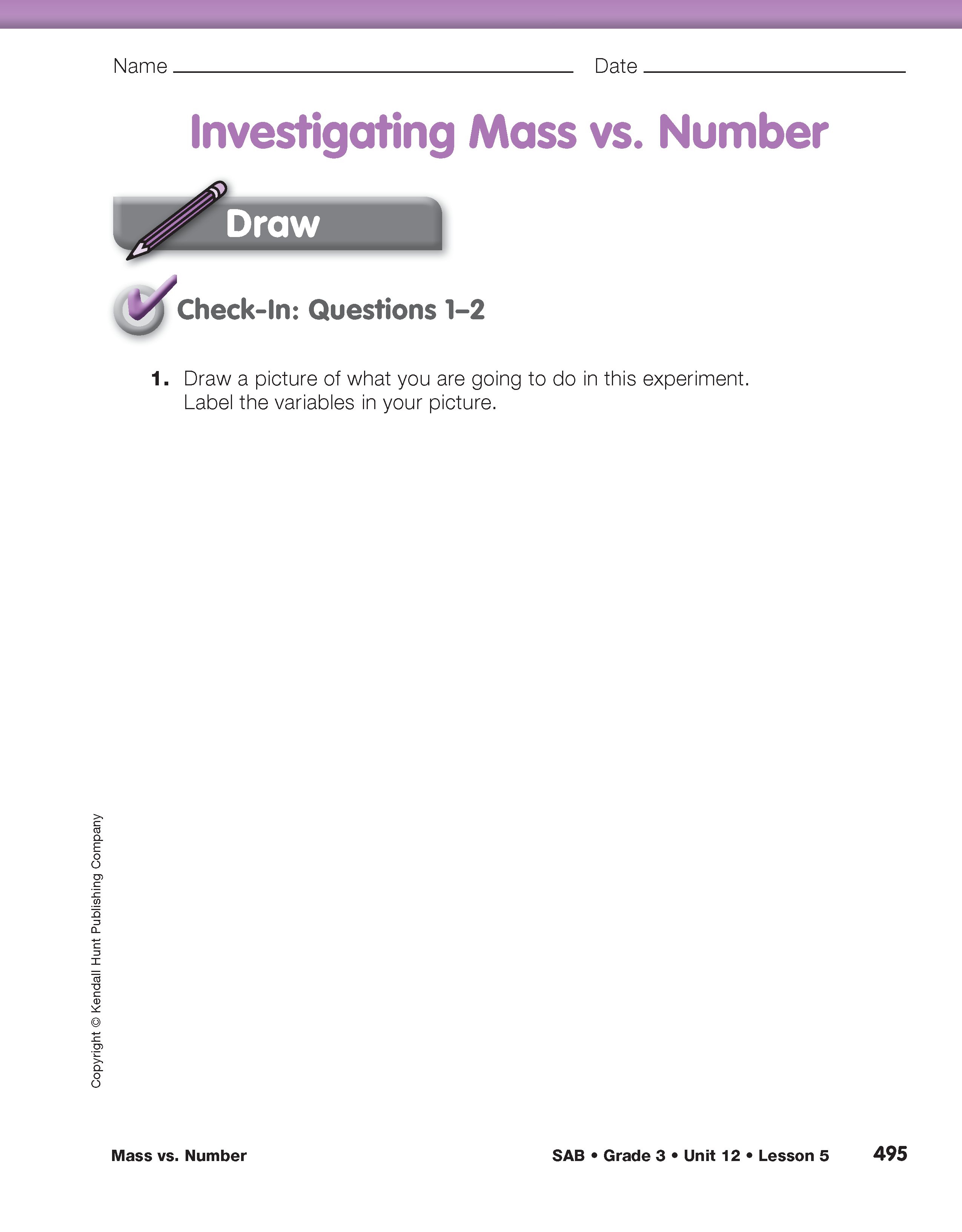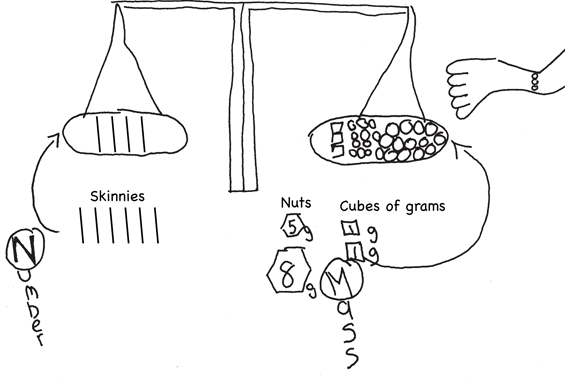Mass vs. Number
Est. Class Sessions: 3–4Developing the Lesson
Part 2. Drawing the Picture
To discover the relationship between the number of objects and the total mass, we use the TIMs Laboratory Method: drawing a picture, collecting and organizing data in a data table, graphing the data, and exploring the data through questions.
Explain to students that each student group will get ten nearly identical objects such as unused pieces of chalk, the same-size balls, or plastic skinnies, for example. See Materials Preparation. Students will use a two-pan balance and a set of standard masses to measure the mass of the objects in grams. The manipulated variable in the investigation is Number of Objects, and the responding variable is Mass in grams. Briefly demonstrate the procedure by using a set of identical objects, different from the objects that the students will mass. Remind students that when measuring with the two-pan balance that they should:
- level the balance;
- measure carefully;
- make sure the pans are still before adding or removing masses;
- balance the two pans as closely as possible;
- add the standard masses correctly.
An example of a student drawing is shown in Figure 2. Note that the two-pan balance and the variables (M for Mass and N for Number of Skinnies) are clear in the picture. The student has drawn the skinnies being massed and the standard masses she used.
Ask:
After the class has discussed the investigation and you feel confident that students understand the procedure, assign Check-In: Question 1 on the Investigating Mass vs. Number pages in the Student Activity Book.














